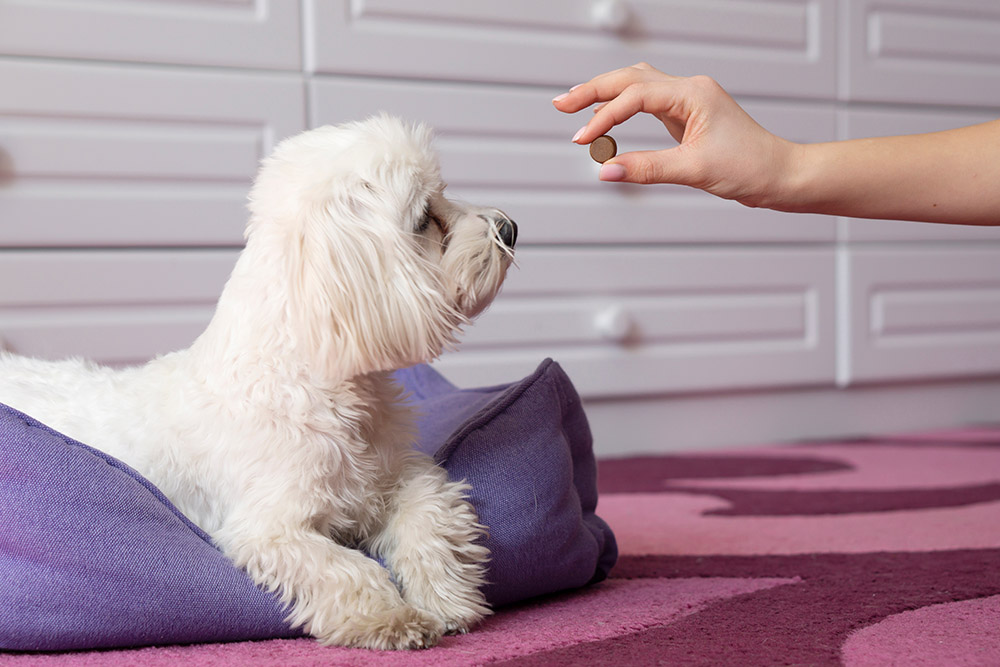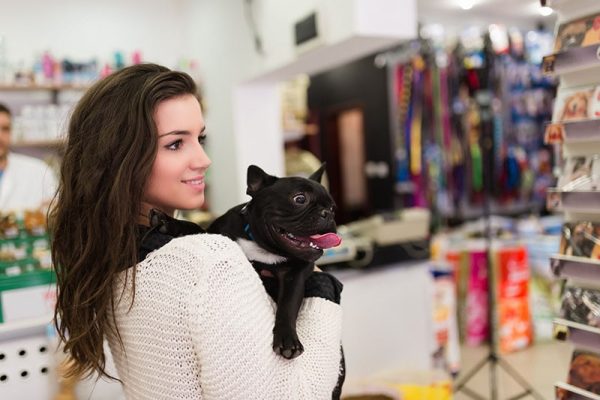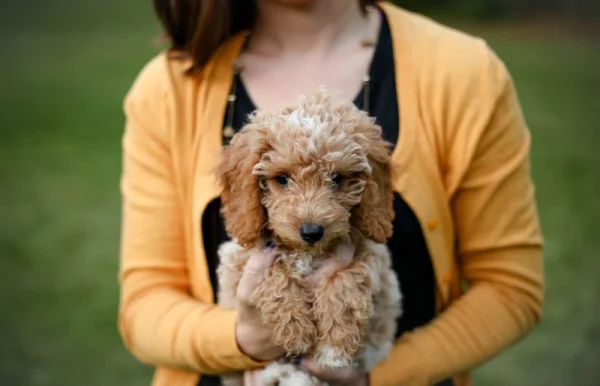Big animals tend to live longer than small ones. Think of an African elephant, averaging 60 years in the wild versus a lowly deer mouse that is lucky to live only 1 to 2 years. However, we can cast all of this aside when it comes to the lifespans of dogs.
Our canine companions are diverse, ranging from the tiny Chihuahua to the massive Mastiff. Research has confirmed that small dogs live longer than large pups. While in average dogs live for 12.5 years, one study showed small breeds were found to have average lifespans of 12.7 years, while in large dogs this was reduced by 20% to 11.9 years.1
Scientists have several theories to account for the differences but no definitive reason, a combination of factors are likely to be at play. Below, we’ll cover the evidence supporting each of these hypotheses.

Why Small Dogs Live Longer Than Large Dogs: 8 Theories and Possible Factors
1. Faster Aging in Large Dogs
A large study considered the growth pattern of the various breeds using data collected from over 56,000 dogs.2 The researchers theorized that large canines age faster than small ones. They quantified the aging process at a loss of 1 month in life expectancy for every 4.4-pound increase in weight. This figure represents a statistical analysis of the data. However, it doesn’t provide a reason.
Of course, the scientists had theories about what might be happening to account for the difference. They speculated that faster aging set up big animals for age-related diseases quicker than small dogs. The accelerated growth may also predispose some canines to cancer.

2. Varying Disease Prevalence With Size
Another explanation for the varying life expectancies of dogs lies in the different disease prevalences in small versus large breeds. One study identified patterns in when medical disorders develop based on the dog’s age and size. They found positive associations between a dog’s size and the lifetime prevalence of skin issues, orthopedic problems, gastrointestinal and neurological conditions, among others.3
Another compelling finding also involved cancer risk. Small breeds had significantly lower chances of developing these conditions than large pups. Experts at the University of Adelaide who analyzed the data believed that this relationship between a dog’s size and their lifespan may be due to an evolutionary lag in their body’s cancer defenses. So, disease can undoubtedly affect lifespan and offer another explanation, particularly when coupled with the faster-aging theory.
3. Mixed Breeds vs. Purebred Dogs
Another study analyzed data collected from 2,370,078 dogs in the United States, looking at various lifestyle factors. The researchers found mixed breed dogs lived longer than purebred pups. Genetic diversity is a likely explanation. The latter represents a smaller gene pool. That can lead to a heightened risk of deleterious hereditary and congenital conditions. It’s simply genetic roulette at work.
Selective breeding also carries a risk of piggyback mutations. These are harmful traits that may accompany desirable ones. A classic example is the prevalence of a type of skin cancer associated with the dark-coat variant in Standard Poodles. The other concern across the board is inbreeding. It can have several harmful outcomes, including low neonatal survival and a greater risk of early mortality.
These findings lend solid support for genetics playing a significant role in canine life expectancy.

4. Brachycephalic Breeds and Non-Brachycephalic Breeds
Humans initially bred dogs for functional roles like guardians and draft animals. Another role canine filled was a companion. One of the consequences was the rise of brachycephalic breeds, such as Pugs and Shih Tzus. The previous study we cited also found shorter lifespans in these pups versus non-brachycephalic breeds. These dogs represent an exception to the rule about small canines living longer.
It’s worth noting that the Mastiff qualifies as a brachycephalic breed with their short muzzles. That may explain why the average lifespan for this dog is only 6 to 10 years. One of the risk factors for these animals is a respiratory condition called brachycephalic obstructive airway syndrome (BOAS).
5. Intact vs. Sterile Dogs
Another reason some dogs live longer than others involves their reproductive status. Overall in studies lifespan is greater in sterilized dogs compared with those that remain intact. Intact animals may also be more aggressive and more likely to bite. Lifestyle factors also come into play. An intact male may be more likely to be territorial and willing to defend their space. That makes them more prone to life-threatening conflict.
Neutered-spayed dogs had a lower risk of infectious disease and cancers associated with reproductive organs. However, joint disease was also more prevalent in some breeds, like Golden Retrievers. We recommend discussing this decision with your vet and deciding on the best timing of the procedure for your individual dog with them.
6. The Telomere Connection
We’ve discussed the role of genetics in life expectancy. One study focused on a specific mechanism with the telomeres, which are pieces of DNA found at the ends of chromosomes. Some evidence suggests they may influence lifespan in canines and humans. Cell division can affect the length and, thus, lifespan of cells. The rapid growth of large breeds may accelerate cell aging and shorten their lives.
These findings point to the complexity of this question. Aging appears to have several contributing factors that can’t be easily explained with a simple answer. But wait! There’s more.
7. Dental Care
We all know the importance of good dental health. Research has shown the same adage applies to canines. Dogs that had more frequent dental scalings had longer lifespans. Remember that oral infections can have far reaching effects all over the body . That may explain these findings. Nevertheless, it’s another reason to ensure your pup gets regular veterinary care.
8. Lifestyle Factors
Other factors can influence the lifespan of your pet. We can make some generalizations that may apply. A large dog is more likely to be a guardian or watchdog, putting the animal at risk for injury. People have them as hunting companions, herders, and in other jobs that may put them in harm’s way. Meanwhile, pet owners may be more likely to cuddle and pamper a small pooch.
However, the good life has a price. Nearly 60% of dogs are overweight or obese. This condition can increase the pup’s chance of chronic health conditions, such as diabetes and heart disease. Research has identified several breeds at risk, including Golden Retrievers, Dachshunds, and Cocker Spaniels. We can conclude obesity is blind to the animal’s size.
The lifestyle of the pet owner is another consideration. Research has shown associations between dangerous dogs and antisocial behavior. We can make similar assumptions about a lack of veterinary care, socialization, or training. Therefore, irresponsible pet ownership is another risk factor for any dog, small or large.


Tips to Help Your Dog Live Longer
Regardless of your dog’s breed or size, there are definitely things you can do to ensure they live the longest life possible.
- Feeding a high-quality diet with 24/7 access to fresh, clean water
- Maintaining a healthy weight
- Encouraging physical and mental exercise that is breed-appropriate
- Providing dental care
- Taking them for annual vet check-ups and vaccinations
- Keeping them safe from accidents
- Administering heartworm, flea, and tick preventatives
- Providing lots of love and affection
- Creating a stress-free home environment

Final Thoughts
While it’s true that small dogs live longer than large pups, the reasons aren’t clear. There are plenty of theories for why this is, as well as factors affecting your dog’s lifespan. Some, like genetics, are out of your control. You can start by researching reputable breeders who screen for genetic diseases before buying your dog. You can also provide regular veterinary care for your pup to ensure the best quality of life while you’re together. All in all, we know that large dog breeds don’t live as long, so you should do everything you can to provide a healthy lifestyle for them and enjoy every second that you have together.
Featured Image Credit: Roman Zaiets, Shutterstock




















